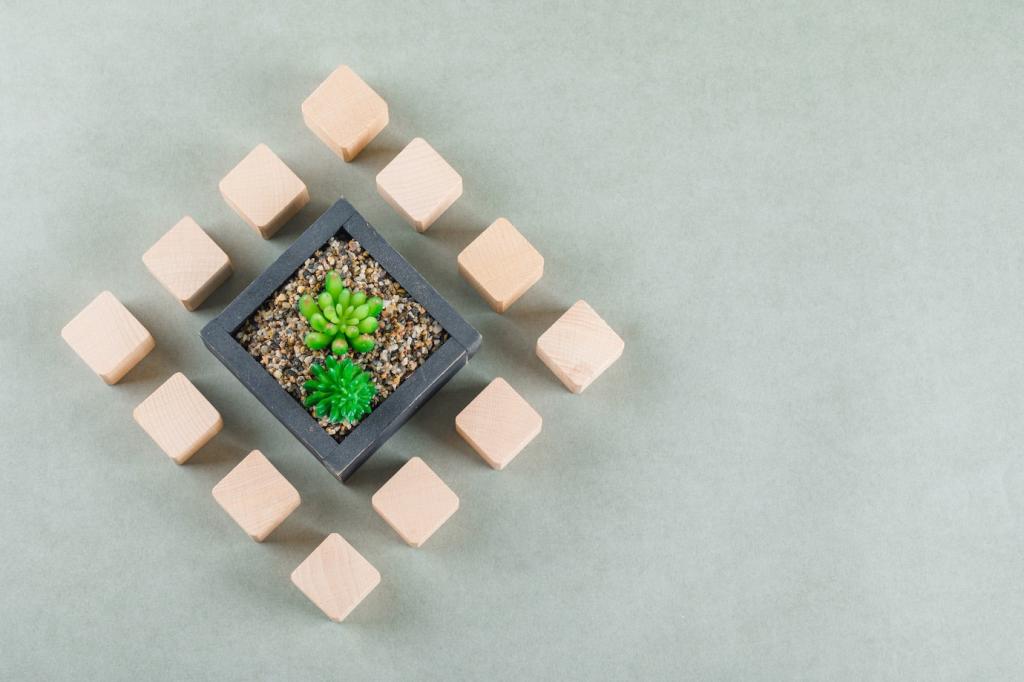
Revolutionary Concepts for Eco-conscious Home Renovation
Embracing eco-conscious home renovation is about far more than simply using greener materials. It’s a bold movement redefining the very way we think about living space, comfort, and environmental stewardship. Modern innovations invite homeowners to reduce their environmental footprint without compromising on beauty or function. By exploring revolutionary ideas, from biophilic building to closed-loop resource cycles, homeowners can transform properties into sustainable sanctuaries that inspire, delight, and endure for generations. If you’re ready to update your living space with ecological purpose, these groundbreaking concepts illuminate the path toward a truly green home.
Living Green Infrastructure
Green roofs and plant-covered walls are gaining momentum as foundational elements in eco-friendly renovations. These living infrastructures provide exceptional insulation, sequester airborne pollutants, and increase urban biodiversity. Their cooling effects reduce indoor heat, lessening reliance on air-conditioning, while capturing and filtering rainwater to minimize runoff. Beyond the tangible environmental benefits, these verdant additions infuse living spaces with tranquility and foster a renewed connection to the rhythms of nature.
Maximizing Daylight and Natural Airflow
Harnessing daylight and optimizing indoor air circulation have profound impacts on both energy consumption and occupant health. Renovation strategies may include enlarging south-facing windows, installing skylights, or leveraging solar tubes to channel sunlight deep within the home. Carefully placed operable windows and transoms support cross-ventilation, reducing the need for mechanical cooling. Such interventions not only slash utility bills but create uplifting interiors brimming with natural vitality—a crucial step toward sustainable luxury.
Nature-inspired Material Choices
Materials derived from nature—such as responsibly sourced timber, bamboo, cork, and reclaimed wood—enrich any renovation project, minimizing environmental impact while exuding warmth and authenticity. These resources are renewable, often biodegradable, and frequently processed with fewer carbon emissions. Their inherent textures and tones forge calming, tactile environments. Sourcing local or recycled materials further lessens transportation costs and supports regional economies, culminating in homes that honor both ecological and aesthetic principles.
Circular Resource Systems and Zero-waste Solutions
Adaptive Reuse and Upcycling
Adaptive reuse breathes new life into materials and components once bound for the landfill. By salvaging vintage wood flooring, repurposing old bricks, or transforming worn fixtures into statement pieces, homeowners can craft interiors that teem with character and history. Upcycling creative solutions save resources and tell stories—a cherished timber beam supports new ceilings, a rescued bathtub becomes a flower-filled terrace centerpiece. These practices honor existing craftsmanship while showcasing ecological ingenuity.
Closed-loop Water Management
Implementing circular water systems is a revolutionary renovation strategy. Greywater recycling diverts lightly used water from sinks, showers, and washers, restoring it for landscape irrigation or toilet flushing. Rainwater harvesting systems capture precipitation for myriad non-potable uses, dramatically easing demand on municipal supplies. By turning waste into a resource, these closed-loop solutions reduce water bills, support garden vitality, and empower families to steward every drop in their domestic ecosystem.
Designing for Disassembly and Material Recovery
Forward-thinking renovations now consider a building’s entire lifecycle. Designing for disassembly ensures that when interiors are updated or properties eventually change, each component—from flooring panels to window casements—can be dismantled and reused or recycled without waste. This approach demands careful material selection, modular construction, and reversible connections, replacing wasteful demolition with restorative transformation. Homes thus become repositories of invaluable material rather than sources of landfill debris.
Smart Energy Optimization and Renewable Integration
01
Passive House Techniques for Ultimate Efficiency
Passive house principles offer the gold standard for energy efficiency in home renovation. Stringent air sealing, superinsulated envelopes, high-performance windows, and heat-recovery ventilation systems slash heating and cooling demands. Strategic orientation and shading ensure interiors remain temperate year-round using minimal external energy. Such holistic retrofits create living spaces that are more comfortable, quieter, and remarkably affordable to run, establishing a blueprint for future-ready, climate-positive homes.
02
Integrating Solar and Clean Power Solutions
Installing photovoltaic panels or solar thermal collectors empowers homeowners to generate their own clean energy, dramatically slashing dependency on fossil fuels. Coupling solar arrays with battery storage allows for grid independence during peak demand or outages, while smart inverters can direct excess power back to the grid as a revenue stream. Paired with electrification of heating and hot water systems, these upgrades turn ordinary homes into renewable energy hubs within the broader community.
03
Intelligent Energy Management and Automation
Technological advances have made it possible to precisely monitor and optimize domestic energy consumption. Smart home systems, complete with integrated sensors and AI-driven controls, dynamically adjust lighting, HVAC, and appliance usage based on occupancy, weather, or real-time electricity rates. Homeowners gain actionable data to reduce waste, balance loads, and shift demand to off-peak hours—all while enjoying effortless comfort. Over time, these “invisible” upgrades yield accumulated energy and financial savings on a truly revolutionary scale.
